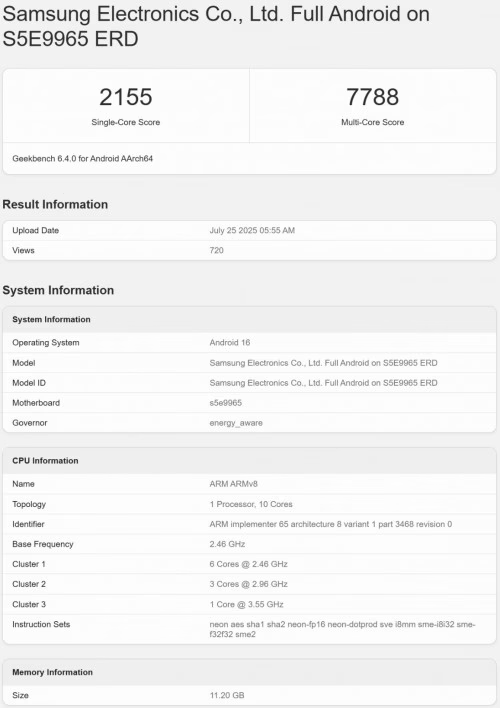Samsung's Exynos 2600 Surfaces on Geekbench: Early Performance Insights Emerge
The mobile tech world is abuzz, and for good reason. Samsung's next-generation flagship system-on-a-chip, the Exynos 2600, has reportedly made its first appearance on Geekbench. This isn't just another benchmark leak; it's a crucial early peek into what could power a significant portion of the upcoming Galaxy S26 series. And frankly, it's a really interesting development, this.
For years, the debate between Samsung's in-house Exynos chips and Qualcomm's Snapdragon counterparts has been a hot topic among enthusiasts. This latest sighting gives us some tangible data points to chew on, suggesting Samsung is making strides, even if the road ahead still looks challenging in some areas.
Decoding the Early Geekbench Scores
So, what are we seeing? The Exynos 2600, in what's clearly an early testing phase, has posted Geekbench scores that, while promising, offer a nuanced picture. We're talking about single-core scores reportedly hovering around 2100+ and multi-core scores in the 7700+ range. These numbers, straight from the benchmark, indicate a noticeable leap over its predecessor, the Exynos 2500. That's good news, right? It shows progress.
However, and this is where the nuance comes in, these initial figures still place it a step behind Qualcomm's formidable Snapdragon 8 Elite chip. It's a familiar narrative, isn't it? Samsung closing the gap, but not quite eliminating it. The chip's configuration is also noteworthy: a 10-core cluster, all performance cores, which is an aggressive design choice. It suggests Samsung is pushing for raw power, perhaps aiming to optimize later. But what does that really mean for daily usage? Well, for most users, it translates to snappier app launches and smoother multitasking.
A Surprising Edge in Gaming Performance
This is a significant shift. For a long time, gaming performance was often cited as a key area where Snapdragon held a clear advantage. If these early 3DMark results hold true, it implies Samsung is heavily investing in and optimizing its GPU architecture, likely leveraging its partnership with AMD for RDNA-based graphics. This could be a game-changer for mobile gamers who opt for Exynos-powered devices. Imagine playing the latest demanding titles with better frame rates and graphical fidelity. It's a compelling prospect, certainly.
The Galaxy S26 Series and Regional Realities
The big question on everyone's mind, of course, is which devices will feature this new silicon. Strong speculation points to the Exynos 2600 powering at least some variants of the upcoming Galaxy S26 series, expected to launch early next year. This would continue Samsung's dual-sourcing strategy for its flagship phones.
However, there's a catch, and it's a familiar one for Exynos fans: yield rates. Due to potential low yield rates in manufacturing, there's a strong possibility that Exynos 2600-powered Galaxy S26 models might be limited primarily to European markets. Other regions, including North America and parts of Asia, would likely continue to receive Snapdragon-equipped versions. This isn't ideal for global consistency, but it's a pragmatic decision if production challenges persist. It's a bit of a bummer for those outside Europe who prefer the Exynos, or just want the absolute latest from Samsung's own fabs.
Community Buzz and Expert Caution
The news has, predictably, sparked a flurry of discussion across tech forums and social media. On platforms like X, community sentiment is a mixed bag. There's excitement about the performance improvements and the potential gaming prowess, but also lingering skepticism about the "Exynos vs. Snapdragon" performance parity and, of course, the regional availability. People have been burned before, so a healthy dose of caution is understandable.
Expert analysts, while acknowledging the promising benchmark results, echo this sentiment. They rightly point out that early test results are just that—early. Performance can fluctuate significantly during the development cycle, and final optimization plays a huge role. We'll need to see more comprehensive data, especially real-world usage tests, before drawing definitive conclusions. But for now, the Exynos 2600 looks like a step in the right direction for Samsung's in-house chip ambitions. It's a journey, not a sprint, and this chip seems to be picking up the pace.
